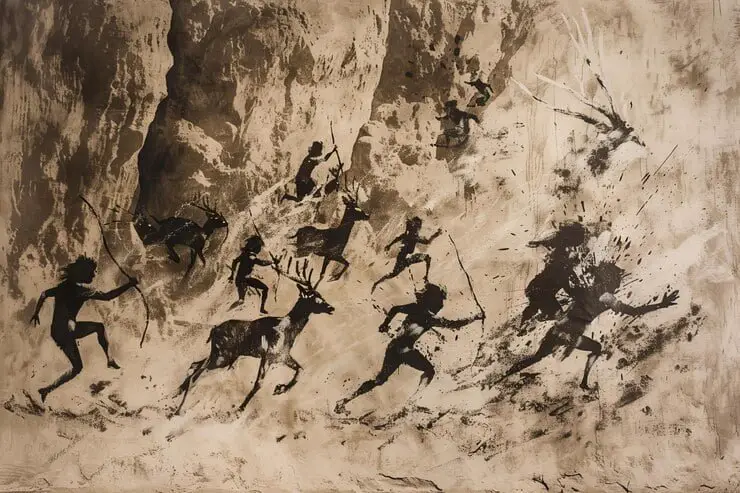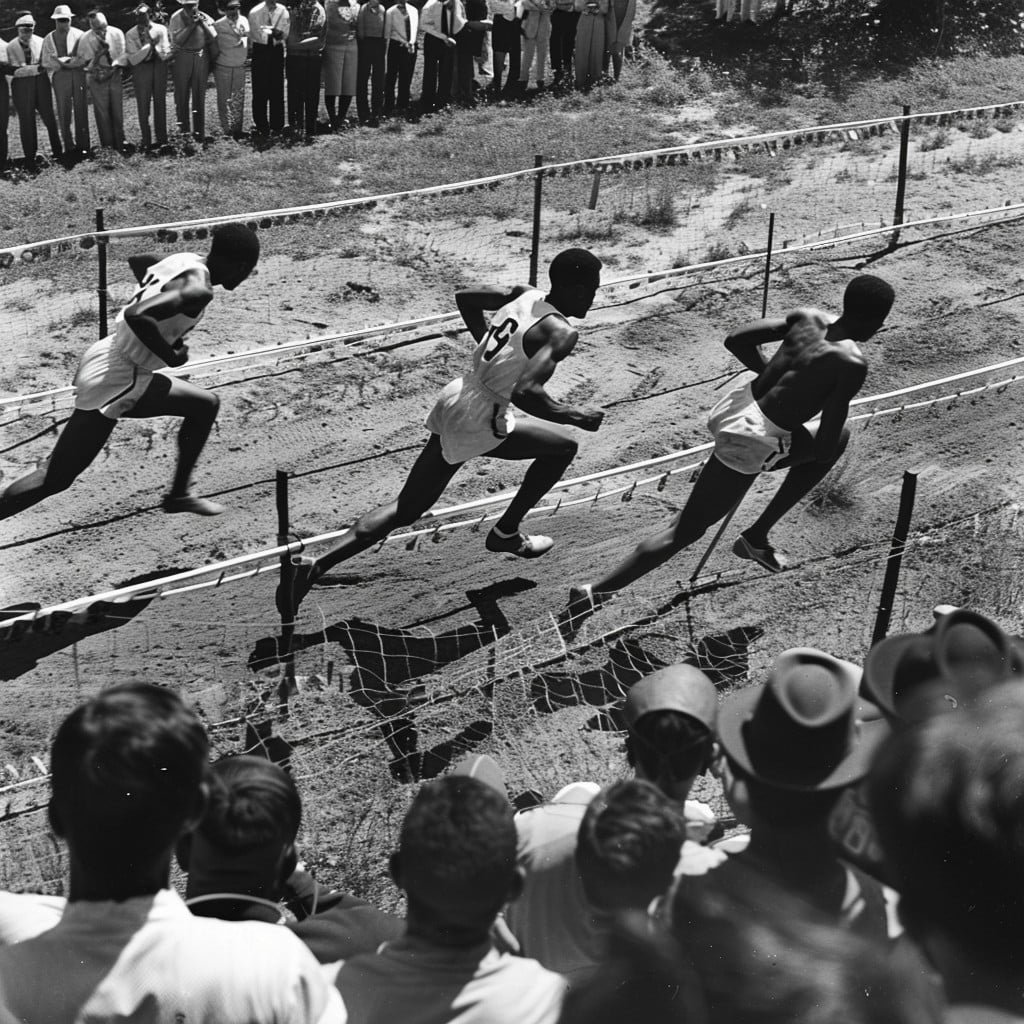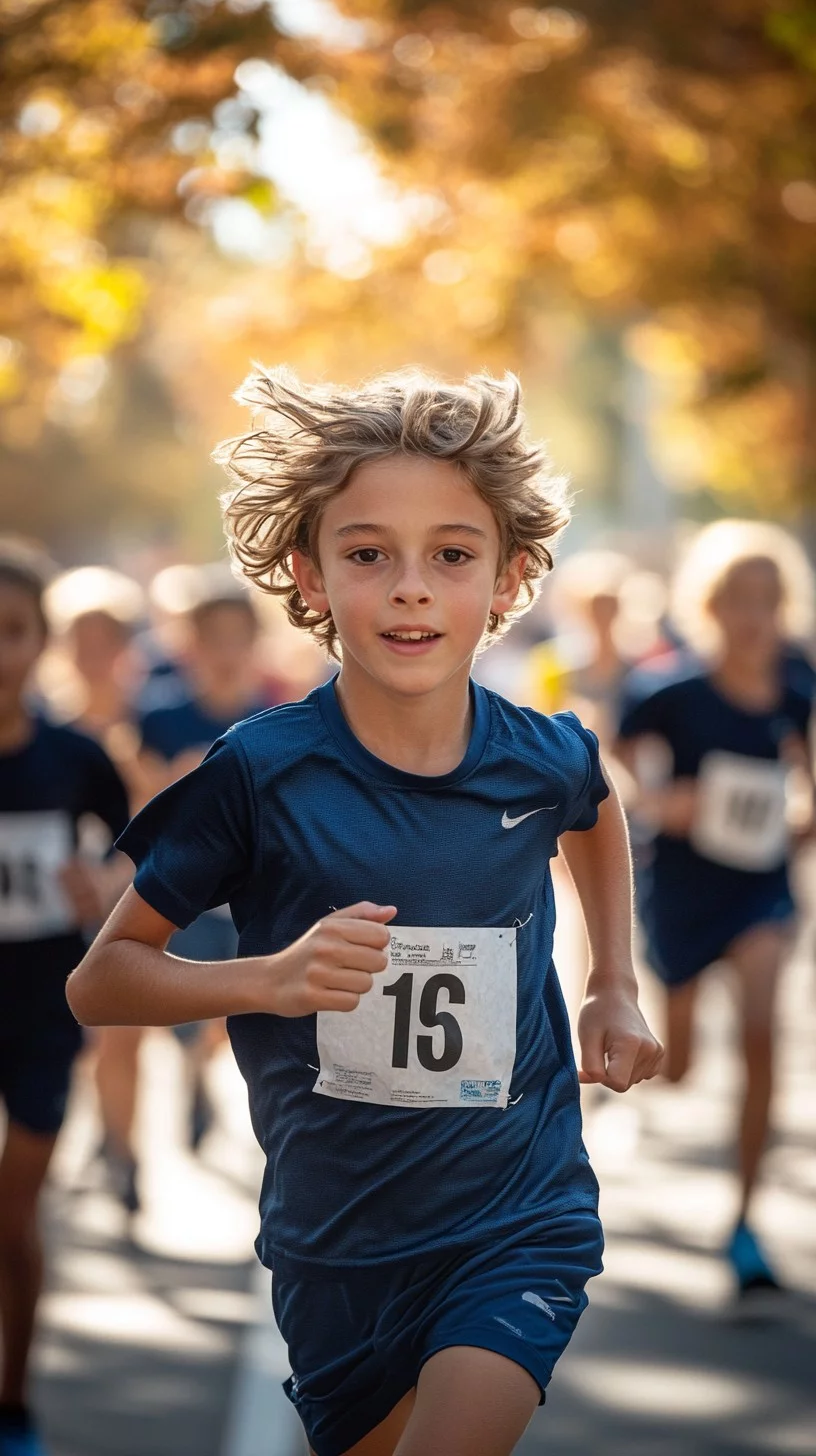Table of Contents
When was running invented
The origins of running are deeply intertwined with the evolution of the human species. As one of the most basic and essential human movements, running has a record of prehistory, with roots dating back to the earliest days of human existence. The development of running as both a survival method and a cultural practice spans millions of years, reflecting the complex interplay between biology, ecology, and social development.
Running is one of the oldest forms of human locomotion and has played a crucial role in the development of our species, culture, and physical fitness. While it may be difficult to pinpoint a specific date when running was “invented,” we can trace the history of running back to prehistoric times and explore its evolution through various periods, cultures, and its significance in human history. This discussion will provide a detailed account of the origins of running, its development as a sport, its role in society, and its contemporary significance.
When was running invented
The Origins of Running
Prehistoric Era
Running is likely as old as humanity itself. The ability to run, or locomotion in general, was essential for survival in prehistoric times. Early humans were primarily hunters and gatherers, relying on their ability to pursue game and escape predators. Archaeological evidence suggests that Homo erectus, an early human ancestor, may have run long distances to hunt animals, gather food, and adapt to various environments.
Evolutionary Advantage: Running provided early humans with a significant evolutionary advantage. The ability to run efficiently allowed them to cover large distances, find food, and evade threats. Studies of early human skeletal remains show adaptations for bipedal locomotion, including long legs and a narrow pelvis, indicating that running was a natural and essential part of their lives.
Cultural Significance
As humans transitioned from nomadic lifestyles to settled agricultural societies around 10,000 years ago, the role of running began to evolve. Running became not only a means of survival but also a form of communication and cultural expression.
- Messengers: In ancient civilizations, running was often utilized as a method of communication. Runners were employed as messengers to deliver important information across vast distances. For example, the ancient Greeks relied on foot runners to relay news between city-states. This practice underscored the significance of running in governance and diplomacy.
- Religious Practices: Running also held religious significance in various cultures. In ancient Greece, running was integral to the Olympic Games, a festival honoring the gods. The games began in 776 BCE, featuring various athletic events, including foot races. Runners were celebrated and revered, and victories in these races were seen as divine favor.

Evolutionary Beginnings: Walking as Survival
Running as a human activity probably began around 4.5 million years ago with the appearance of early hominins. These early ancestors of modern humans evolved to walk on two legs, a process known as bipedalism. This evolutionary change was an important adaptation that allowed early hominins to travel greater distances more efficiently, in search of food and to avoid predators. The ability to run was therefore not just a by-product of bipedalism, but an important survival tool.
The development of endurance running—humans’ ability to run long distances—can be traced back to Homo, specifically Homo erectus, who lived about 2 million years ago. Physical adaptations such as larger gluteus maximus, longer Achilles tendons, and nuchal ligaments (which help stabilize the head during running) suggest that these early humans were well adapted for running. Unlike many other animals, humans evolved to run long distances, an ability that enabled them to practice constant hunting. This method of hunting involved chasing prey over long distances until the animal was exhausted, at which point it could be more easily killed. This strategy, combined with the use of tools, likely contributed to the success of early human populations.
Running in Ancient Civilizations: From Ritual to Sport
As human societies developed, running began to take on new meanings and purposes beyond mere survival. It became integrated into the cultural, religious and social practices of various civilizations.
Ancient Egypt

In ancient Egypt, running was associated with royal rites and the divine right to rule. One of the earliest recorded examples of running as a ritual activity is found in the Heb Sed festival, a ritual celebrated by pharaohs to demonstrate their physical fitness and ability to rule effectively. During this festival, the pharaoh would run a predetermined course to symbolize his continued zeal to rule and divine approval. This ritual signifies an initial commitment to strength, endurance, and legitimacy.
Ancient Greece
The ancient Greeks are perhaps the most important contributors to the history of running as a sport. Running events were central to the Olympic Games, which began in Olympia in 776 BC. The stadion race, a sprint over a distance of about 200 meters, was the largest event in the early Olympics and is one of the oldest recorded foot races in history.
Greek society respected athleticism, and running was seen as a way to achieve *areti*, or excellence, a core value in Greek culture. Running, along with other athletic pursuits, was considered not only a display of physical prowess but also a means of cultivating moral and intellectual virtues. The Greeks believed that a strong body was essential to a strong mind, and running for education and citizenship was an important part of their overall outlook.
The marathon, one of the most popular running events today, also has its roots in ancient Greece. The event commemorates the legendary race of Pheidippides, a Greek soldier who, according to Herodotus and later sources, ran from the battlefield of Marathon to Athens, a distance of about 26 miles, to deliver news of a Greek victory over the Persians in 490. . BCE Although the historical accuracy of this account is debated, the story of Pheidippides has become a symbol of the drive, endurance, and human determination that inspired the inclusion of the marathon in the modern Olympic Games.
Mesoamerican Civilizations.
In the Americas, running played an important role in the daily life and culture of several Mesoamerican civilizations, including the Maya, Aztecs, and Tarahumara people of northern Mexico. For these cultures, running was a practical skill and a revered tradition.
The Maya and Aztecs used long-distance runners as messengers, called *tamalínes* in the Aztec language, who were responsible for carrying messages and goods across the vast distances of their empires. These runners needed to be highly trained and physically fit, as their duties required them to cross difficult terrain and cover large distances quickly.
The Tarahumara people, also known as the Raramori, are known for their extraordinary running skills. Living in the rugged Sierra Madre Mountains, the Tarahumara have a tradition of long-distance running that is deeply rooted in their culture and way of life. Running, for the Tarahumara, is not.
Not just a game but a spiritual and communal activity, often performed as part of religious ceremonies or competitive events called *rarájipari*, involves kicking a wooden ball while running for a distance of over 100 miles. Killing is involved. This unique running culture has attracted significant attention from researchers and athletes alike, highlighting the diverse ways in which running has been integrated into human societies.
The modern evolution of running: from sport to entertainment
The transformation of running from a cultural and ceremonial activity into a modern sport began in the 19th century, particularly in Europe and North America. With the advent of industrialization and urbanization, recreational activities became more organized, and running emerged as a popular form of sport and exercise.

19th century : Rise of competitive racing
Running was formalized as a competitive sport in the 19th century with the establishment of track and field events. One of the earliest organized running events was the Cambridge University Hare and Hounds Club Race, first held in 1837, which laid the foundation for modern cross-country running.
The creation of the Amateur Athletic Association (AAA) in England in 1880 further institutionalized running as a sport. The AAA organized national championships and established standard rules for track and field events, including the various running races.
Modern Olympic Games
The revival of the Olympic Games in 1896 by Pierre de Coubertin marked an important milestone in the history of running. The modern Olympics reintroduced ancient Greek athletic traditions to the world stage, with running competitions becoming central to the games. The marathon, inspired by the ancient legend of Pheidippides, was first included in the modern Olympics and quickly became the most popular event in the Games.
Running in the modern Olympics includes a variety of distances, from sprints (100 meters) to middle distances (800 meters and 1500 meters) and long-distance races (5000 meters and 10,000 meters). The marathon, initially run at about 25 miles, was later set to the standard of 26.2 miles (42.195 km) at the 1908 London Olympics, a distance that has remained the same ever since.
20th Century: Running as a Global Trend
The 20th century witnessed the global popularity of running, both as a competitive sport and as a recreational activity. The development of global sports organizations such as the International Association of Athletics Federations (IAAF), founded in 1912, helped standardize and promote running events worldwide.
The rise of jogging in the 1960s and 1970s, especially in the United States, ushered in a new chapter in running history. The jogging movement, popularized by figures such as Bill Bowerman, co-founder of Nike, and aerobic exercise pioneer Dr. Kenneth Cooper, emphasized the health benefits of running. This shift in perspective transformed running from a niche sport into a mainstream fitness activity accessible to people of all ages and abilities.
The explosion of road races, including marathons, half marathons, and 10Ks, further cemented running’s status as a global phenomenon. Marathons such as the Boston Marathon, established in 1897, and the New York City Marathon, which began in 1970, have become major international events, attracting participants from around the world.
RUNNING TODAY: A UNIVERSAL ACTIVITY
In the 21st century, running is one of the most popular and accessible forms of exercise and sport. The global running community includes professional athletes, recreational runners, and fitness enthusiasts. The proliferation of running clubs, charity runs, and virtual races has fueled a social and communal movement, connecting people across cultures and continents.

Technological advances, such as wearable fitness trackers and mobile apps, have also changed the way people run. These tools provide runners with real-time data about their performance, allowing them to track their progress and set personal goals. The rise of social media has fueled running culture, with platforms like Strava creating global communities where runners can share their successes, challenges and experiences.
Running today is celebrated for its numerous physical and mental health benefits, including improved cardiovascular health, weight management, stress reduction, and improved mood. It remains a universal activity, practiced in diverse settings—from city streets to remote trails—and among all age groups.
When was Jogging Invented
Jogging as a distinct form of exercise began to gain popularity in the 1960s. However, the practice of running at a steady, moderate pace has been a part of human activity for much longer, evolving from the ancient traditions of running for sport and survival.
Early History
- Prehistoric Origins: The act of running, and by extension jogging, is believed to date back to prehistoric times when early humans needed to run for survival—whether for hunting or fleeing from predators. While these early forms of running were primarily functional, they laid the groundwork for more organized athletic practices.
The Rise of Jogging
- 1970s Popularization: The term “jogging” specifically began to appear in the 1960s. Dr. Kenneth Cooper, an American physician, played a pivotal role in promoting jogging as a form of aerobic exercise through his book, “Aerobics,” published in 1968. Cooper’s work emphasized the health benefits of aerobic exercise and included jogging as a key component.
- Fitness Craze: The 1970s saw a jogging boom in the United States, coinciding with the broader fitness movement. Many Americans began jogging not just for health but also as a recreational activity. Running clubs and events began to sprout across the country, making jogging more accessible to the general public.
Contemporary Context
Today, jogging is recognized as a popular form of exercise worldwide. It is characterized by its emphasis on endurance and consistent pacing, differentiating it from sprinting or racing. The availability of jogging paths, organized running events, and the rise of running culture (including social media and apps) have further solidified its place in modern fitness.
In summary, while the act of jogging can be traced back to the ancient practice of running, its formal recognition and popularization as a specific exercise trend occurred in the late 20th century, particularly during the 1960s and 1970s.
The The Future of Running
As the 20th century progressed, running emerged as a popular recreational activity and a means of promoting physical fitness.
Health Benefits
Running provides numerous health benefits, including:
- Cardiovascular Health: Regular running improves cardiovascular fitness, strengthens the heart, and lowers the risk of heart disease.
- Weight Management: Running is an effective way to burn calories and manage weight, making it a popular choice for those looking to lose or maintain their weight.
- Mental Health: Running has been shown to reduce stress, anxiety, and symptoms of depression. The release of endorphins during running creates a sense of well-being, often referred to as the “runner’s high.”
Running Communities
Running has fostered a sense of community and camaraderie among participants. Local running clubs, organized races, and charity events provide opportunities for individuals to connect and support one another.
- Charity Races: Many running events are organized to raise funds for charitable causes. Participants often run for specific organizations, creating a sense of purpose beyond individual achievement.
- Virtual Running Events: The rise of technology has led to the emergence of virtual running events, allowing participants to compete from anywhere in the world. This has expanded the reach of running and made it more accessible to people of all backgrounds.
The Future of Running
As we look to the future, running continues to evolve, embracing new trends and technologies. The growth of wearable fitness devices, mobile apps, and online communities has transformed the way people engage with running.
Technology and Training
- Wearable Technology: Devices like smartwatches and fitness trackers provide runners with valuable data on their performance, allowing for personalized training and goal setting.
- Online Coaching and Communities: The rise of online coaching platforms and social media has created new avenues for runners to connect, share experiences, and seek guidance from experienced coaches and fellow enthusiasts.
Conclusion: A lasting legacy of running

Running as an activity is as old as humanity itself. From its origins as a survival strategy among early hominins to its role in ancient rituals and modern sports, running has evolved alongside human civilization. Its history reflects the adaptability and resilience of the human spirit, as well as the deep connection between physical movement and cultural expression. A close connection between the human spirit as well as physical movement and cultural expression.
As running continues in the modern world, its core appeal remains unchanged: the simple, yet profound, act of putting one foot in front of the other. Whether as a means of survival, a form of worship, a competitive sport, or a recreational activity, running embodies the essence of human endurance, freedom, and achievement as a universal and timeless pursuit. Read More about health
Here’s a list of frequently asked questions (FAQs) regarding running, including its history, health benefits, and more:
FAQ about Running
1. When was running first practiced by humans?
Running is believed to have been practiced by early humans for survival purposes, dating back to prehistoric times. While it is difficult to pinpoint an exact date, running likely evolved as an essential skill for hunting, gathering, and evading predators.
2. What is the historical significance of running in ancient cultures?
Running played a significant role in various ancient cultures, particularly in Greece, where it was central to the Olympic Games. The first recorded Olympic event in 776 BCE was a foot race known as the Stadion, highlighting the importance of running in athletic competition and cultural expression.
3. How has running evolved into a modern sport?
Running has evolved significantly since ancient times. The revival of the modern Olympics in 1896 included various running events, such as the marathon, which became a symbol of endurance. Today, running is organized into numerous competitive events, including marathons, half-marathons, and fun runs, attracting participants worldwide.
4. What are the health benefits of running?
Running provides numerous health benefits, including improved cardiovascular health, weight management, and enhanced mental well-being. It can help reduce stress, anxiety, and symptoms of depression, thanks to the release of endorphins during exercise.
5. What are some common running injuries, and how can they be prevented?
Common running injuries include shin splints, runner’s knee, and Achilles tendinitis. To prevent these injuries, runners should invest in proper footwear, practice good running form, gradually increase mileage, and incorporate rest days into their training schedules.
6. How can beginners start running safely?
Beginners can start running safely by following these steps:
- Start Slow: Begin with walking or jogging intervals to build endurance.
- Set Realistic Goals: Set achievable goals, such as completing a 5K race.
- Listen to Your Body: Pay attention to any signs of pain or discomfort and adjust your training accordingly.
- Stay Hydrated: Drink plenty of water before, during, and after runs.
7. What gear do I need to start running?
To start running, you will need:
- Proper Running Shoes: Invest in quality running shoes that fit well and provide adequate support.
- Comfortable Clothing: Wear moisture-wicking, breathable fabrics to enhance comfort during your runs.
- Accessories: Consider using a watch or fitness tracker to monitor your pace and distance, as well as hydration packs or belts for longer runs.
8. How can I stay motivated to run regularly?
Staying motivated to run can be achieved through several strategies:
- Join a Running Group: Find local running clubs or groups to connect with other runners.
- Set Goals: Establish short-term and long-term running goals to keep you focused.
- Mix Up Your Routine: Vary your running routes, incorporate interval training, or try different types of running events.
- Track Your Progress: Keep a running journal or use apps to monitor your progress and celebrate achievements.
9. Are there any risks associated with running?
While running is generally safe, there are risks involved, especially for inexperienced runners or those with pre-existing health conditions. Risks include overuse injuries, dehydration, and environmental hazards. It is important to consult with a healthcare professional before starting any new exercise program, especially if you have any concerns.


I don’t think the title of your article matches the content lol. Just kidding, mainly because I had some doubts after reading the article.
Thank you for your sharing. I am worried that I lack creative ideas. It is your article that makes me full of hope. Thank you. But, I have a question, can you help me?